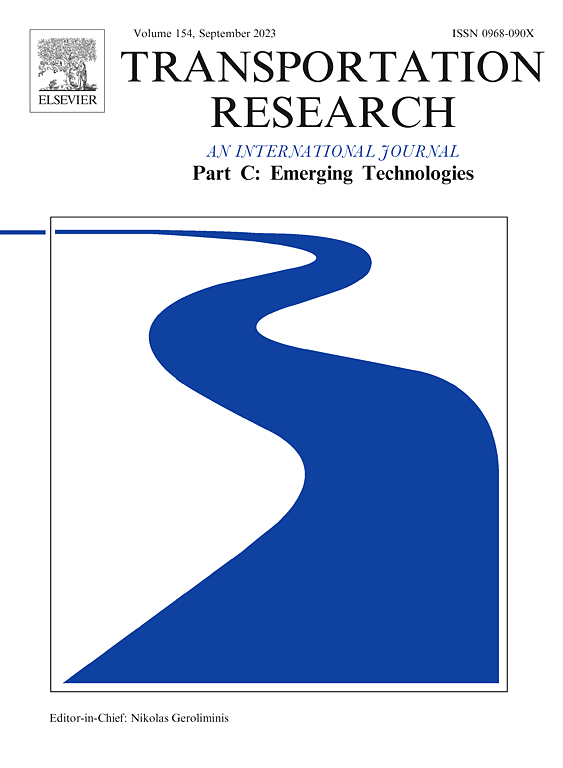A novel AVI sensor location model for individual vehicle path reconstruction on urban road networks
IF 7.6
1区 工程技术
Q1 TRANSPORTATION SCIENCE & TECHNOLOGY
Transportation Research Part C-Emerging Technologies
Pub Date : 2025-03-20
DOI:10.1016/j.trc.2025.105103
引用次数: 0
Abstract
Advances in traffic detection technology have enabled the transition from traditional counting detectors to vehicle identification detectors in many cities across the world. This shift has facilitated the collection of high-dimensional network traffic data through Automatic Vehicle Identification (AVI) systems, significantly advancing areas such as path flow estimation and individual vehicle path reconstruction. However, due to the high cost of fully deploying AVI sensors across urban road networks, reconstructing individual vehicle paths with limited sensor data remains a significant challenge. While existing research has focused primarily on Network Sensor Location Problem (NSLP) models for path flow estimation, their application to individual vehicle path reconstruction is less explored. Inspired by system entropy theory in information science, this study introduces a novel metric called Path Reconstruction Entropy (PRE) to quantify the uncertainty in vehicle path choices as observed by AVI sensors. Leveraging this metric, we propose a novel non-linear integer programming AVI-NSLP model that follows the Minimum PRE principle, optimizing the placement of AVI sensors for enhanced vehicle path reconstruction. The model incorporates a composite objective function that considers network benefits, including the uncertainty of vehicle path reconstruction for observed vehicles and coverage of observed vehicles, across two scenarios: with and without prior path flow information. Numerical studies conducted on two networks—a small-sized Sioux Falls network and a large-sized Xujiahui network in Shanghai—demonstrate that the proposed model consistently outperforms existing models in terms of PRE and other sensor deployment metrics on the smaller network and shows a modest advantage on the larger network. The experimental results demonstrate that the AVI sensor placement strategy developed by the proposed model can significantly improve the accuracy of individual vehicle path reconstruction on urban road networks.
求助全文
约1分钟内获得全文
求助全文
来源期刊
CiteScore
15.80
自引率
12.00%
发文量
332
审稿时长
64 days
期刊介绍:
Transportation Research: Part C (TR_C) is dedicated to showcasing high-quality, scholarly research that delves into the development, applications, and implications of transportation systems and emerging technologies. Our focus lies not solely on individual technologies, but rather on their broader implications for the planning, design, operation, control, maintenance, and rehabilitation of transportation systems, services, and components. In essence, the intellectual core of the journal revolves around the transportation aspect rather than the technology itself. We actively encourage the integration of quantitative methods from diverse fields such as operations research, control systems, complex networks, computer science, and artificial intelligence. Join us in exploring the intersection of transportation systems and emerging technologies to drive innovation and progress in the field.

 求助内容:
求助内容: 应助结果提醒方式:
应助结果提醒方式:


